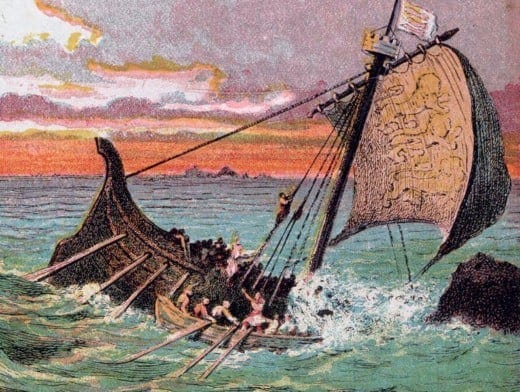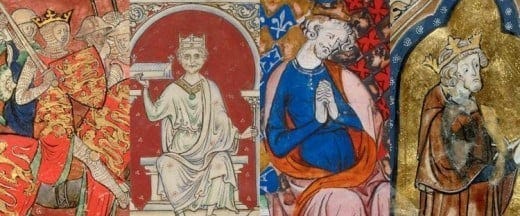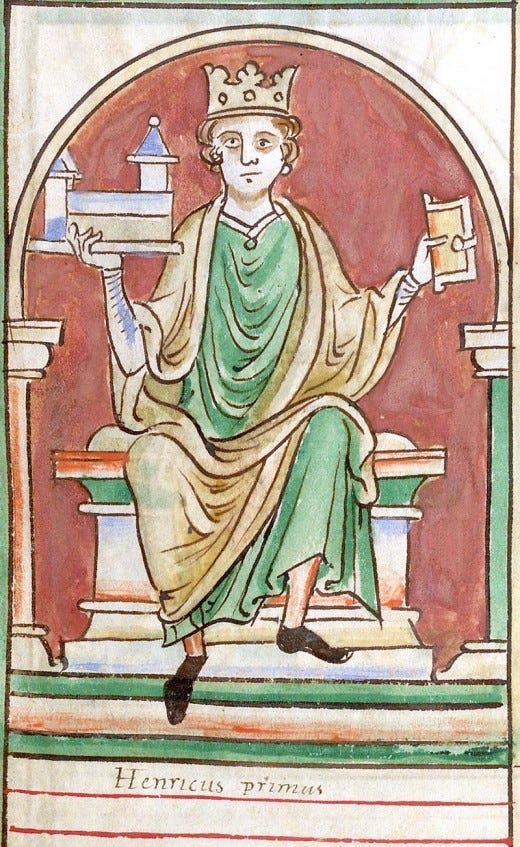The Sinking of the White Ship or the “Medieval Titanic”
An event that changed the course of English history

Death of an Heir
In November 1120, King Henry I of England had been ruling for two decades. After several years of conflict, the English had just prevailed over the French, and Henry’s son and heir William Adelin was formally declared the Duke of Normandy.
Upon leaving Barfleur, Henry likely felt a sense of triumph and pride, secure in both his son’s future and that of his dynasty. But one unforeseen tragedy would change everything.
The sinking of the White Ship would result in the death of nearly everyone on board, including William Adelin, placing a royal family on the path to a succession crisis and, as history always does, once again proving the inherent ephemerality of all things.
Norman Dynasty
The youngest of four sons born to William the Conqueror and Matilda of Flanders, the future Henry I was born in 1068.
Following his father’s death in 1087, Henry’s brother William ascended to the throne, becoming William II (also known as “William Rufus” or “William the Red,” possibly due to his hair color).
William II would breathe his last in New Forest in 1100.
He’d been hunting with several noblemen when, according to the Anglo-Saxon Chronicle, he was “shot by an arrow by one of his own men” — a nobleman later revealed to be Walter Tirel.
Hunting accidents were not uncommon at the time (in fact, another of William the Conqueror’s sons, Richard, had died in a similar fashion and even in the same area, in 1070) and this was believed to be another such case.
However, William’s death is still shrouded in mystery and some historians suspect foul play. The men who had been his companions that day allegedly fled the scene after the king had fallen and his body was discovered by an arrow maker named Eli Parratt.
Tensions had been rising between William and his brother Robert, and it appeared likely that the two would soon go to war. Yet it was younger brother Henry who would act immediately upon hearing of William’s hunting accident, seizing the throne before Robert had a chance to do so, and becoming Henry I.
That same year, he married Matilda of Scotland and the couple went on to have two children together: Matilda and William Adelin, born in 1102 and 1103, respectively.
A notorious philanderer, the king had at least 26 illegitimate children.
A Fateful Voyage
William Adelin married Matilda of Anjou, the daughter of Count Fulk V of Anjou, in 1119.
The Anglo-French War of 1116–1119 (a territorial dispute between England and France) was brought to an end with an English victory at the Battle of Brémule. As a result, Louis VI of France was forced to accept William Adelin as the Duke of Normandy.
It was this event and the settling of a peace agreement between the two countries that brought Henry I and his retinue to France in November 1120.
On November 25th, the royal party was prepared to depart Barfleur, when they were approached by a captain named Thomas FitzStephen, who offered to take them home aboard his vessel — the recently refitted White Ship (Blanche-Nef).
(Interestingly, FitzStephen’s father, Stephen FitzAirard, had been the captain of William the Conqueror’s ship Mora during the Norman Conquest of 1066.)
Henry I had already decided on a ship to transport him back to England, but had no issue with the rest of his party making other arrangements.
“Your request meets my approval,” the king reportedly said. “I have indeed chosen a fine ship for myself, and will not change it, but I entrust you to my sons William and Richard, whom I love as my own life, and many nobles of my realm.”
Lone Survivor
Henry left and, according to chronicler Orderic Vitalis, drinking soon started.
The crew of the White Ship requested wine from William Adelin, which he supplied in large quantities, to the delight of many in the group. However, not everyone was comfortable with this turn of events and some made the choice to leave and find another vessel.
One of these individuals was Stephen of Blois, the king’s nephew, who disembarked “upon observing that it was overcrowded with riotous and headstrong youths.” Orderic Vitalis gave a slightly different account, though, making the claim that it was actually a sudden bout of diarrhea that led to Stephen’s fortuitous and hasty exit.
Approximately 300 people remained on the White Ship as it departed from the port of Barfleur.
Drunk and gleeful, the passengers and crew were eager to overtake the king’s ship and reach England before him. The captain, who had also been drinking, was confident that his vessel — which he knew to be fast and well-constructed — could do so easily and encouraged the crew to row “swifter than an arrow.”
This decision would quickly have disastrous consequences.
Around midnight, the ship hit the submerged Quilleboeuf Rock in the English Channel — just a mile away from the port of Barfleur — and began to take on water at an alarming rate. The White Ship had only one skiff (a small rowboat) and the crew hurried 17-year-old William Adelin onto it, hoping to at least save the heir to the English throne.
“A single skiff was afloat. Its crew swiftly found William and started to row away. All around friends and comrades screamed and fell silent as the winter sea claimed them,” said Normandy Then and Now.
He nearly did escape, but heard the helpless cries of his half-sister, Matilda FitzRoy, Countess of Perche, as she struggled to remain afloat, and ordered the crew to return for her. During the attempt to rescue her, the little rowboat was soon overwhelmed by people desperately trying to save themselves and it capsized.
Ultimately, all but one of the 300 passengers and crew drowned, including 140 noblemen and 48 noblewomen. Richard of Lincoln, an illegitimate son of Henry’s, was also among the victims.
A French butcher named Berold was the lone survivor of the disaster. He had accompanied the group merely to recoup some of the money owed to him by the nobles. Depending on the source, he clung to either a rock or a piece of wreckage after the ship sank and was discovered by fishermen the next morning.
It is only because of Berold’s survival that we have an account of exactly what transpired that night. According to him, the captain had initially survived, but was horrified by the idea of having to face the king with the news that three of his children, including his only legitimate son and heir, had perished because of him and instead chose to drown.
The Tragic News is Delivered
Henry I arrived safely in England, unaware of the tragedy that had taken place. No one wanted to deliver the grim news to the king, but it had to be done. Upon learning of William Adelin’s death, Henry was overcome with grief and began weeping. He remained secluded in his room for days, refusing to see or speak to anyone.
It is said that Henry I never smiled again for the rest of his days.
Many members of the royal household and English aristocracy perished in the shipwreck. Most of the dead were never recovered from the waters of the English Channel.
William Adelin’s wife survived, due to the fact that she’d taken another vessel. She would remain in Henry’s court for several years — treated kindly as one of his daughters — before eventually returning to Anjou and choosing to take a vow as a nun.
Some believed that the White Ship was doomed to sink because it hadn’t been blessed by priests (a common practice at the time).
Henry’s first wife, Matilda of Scotland, had died in 1118. With only one remaining legitimate child — his daughter Matilda — he was desperate to have another male heir and remarried in 1121. However, he would have no more children.
He worried about the future of his dynasty and feared that his nobles wouldn’t accept Matilda, a woman, as the next ruler.
He made them swear fealty to her, although this promise would ultimately matter little upon Henry’s death in 1135, and the realm would be plunged into a civil war between the rival factions of Empress Matilda (her first husband was the Holy Roman Emperor Henry V) and her cousin, Stephen of Blois.
This conflict, known as “The Anarchy,” would continue for many years, finally coming to an end in 1153, with Stephen agreeing to formally recognize Matilda’s son Henry as the rightful heir to the throne. Henry II, as he would be known, would be the first in a long line of Plantagenet rulers.
Scuba divers found the wreckage in 2021.
“We can see that it has the correct design features for a ship of this age, and there are no other recorded shipwrecks in the area,” said expedition leader Roger Michel.
Sometimes referred to as the “Medieval Titanic,” the sinking of the White Ship has an enduring legacy.
As chronicler William of Malmesbury would put it in Gesta Regum Anglorum (or History of the English Kings):
“No ship that ever sailed brought England such disaster.”
If you would like to support my work and make a donation: Buy Me a Coffee
Sources
(This article was originally published on HubPages)







